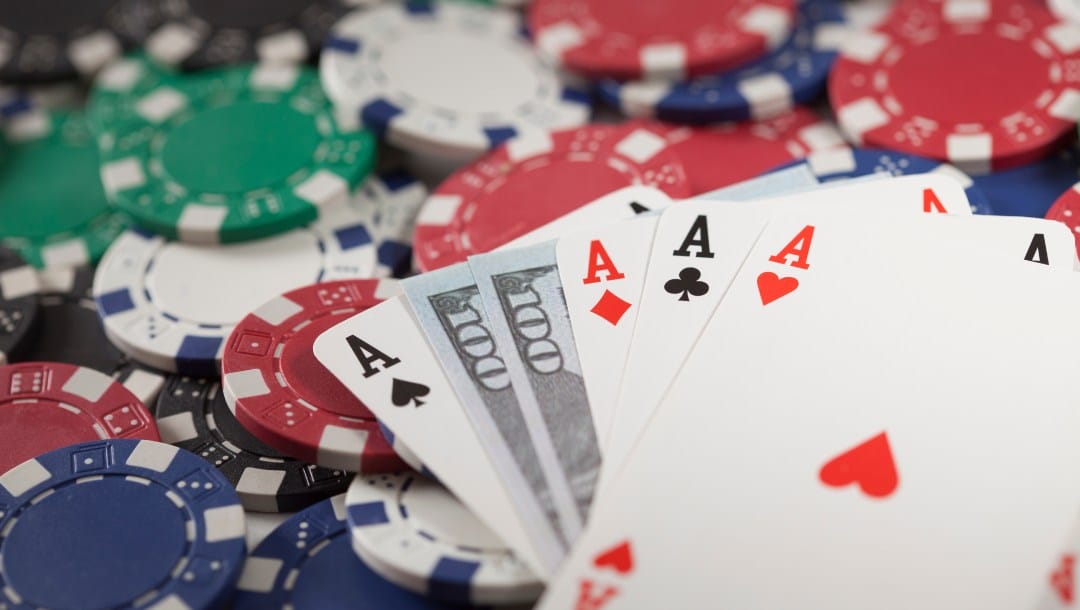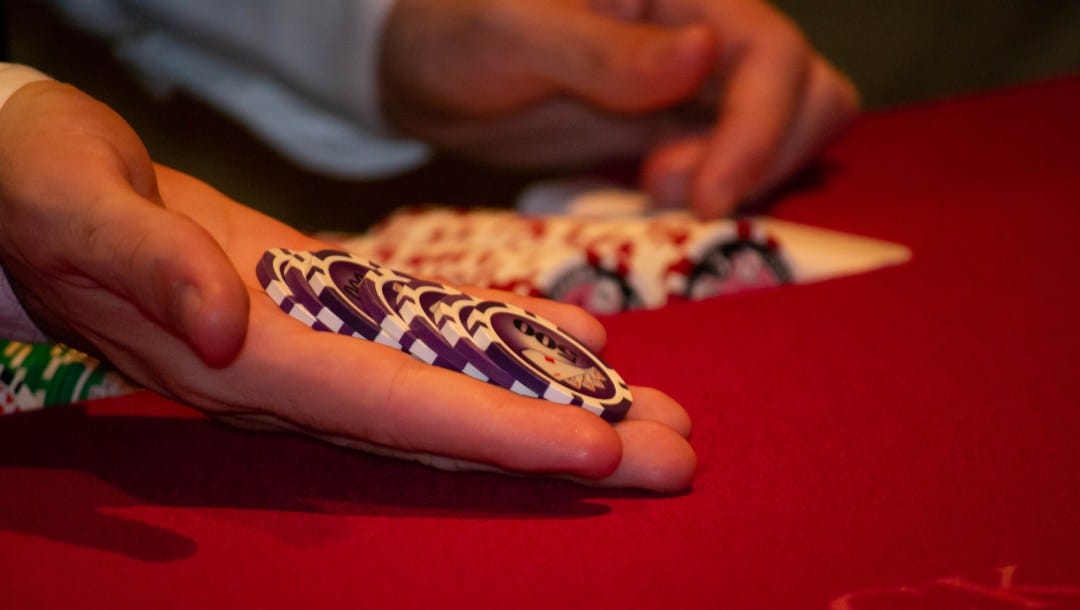To stand a chance of success at the poker table, you need to fully understand draws and how they work. The inside straight draw is one that often comes up. They’re also known as “gutshots” or “belly busters” and should be approached differently depending on both your situation and the type of poker you’re playing.
In this blog post, you’ll learn exactly what gutshots are and how to use them successfully in both online poker tournaments and cash games. Make the most of these tips and put them into practice the next time you join a table.
What Is a Gutshot Straight Draw?
A draw is basically any incomplete poker hand that needs additional cards. There are many different kinds of draws, and recognizing them helps you understand your odds of winning. Unlike other online casino games, strategy is hugely important in poker since you’re up against human opponents.
A gutshot is an inside straight draw. You have four to a straight and need one specific card from within the straight to complete it. There are just four cards in the deck that improve your situation, as opposed to an open-ended straight draw where there are eight.
Here’s an example to help illustrate the point:
- Your starting hand is 8-7 of hearts.
- The flop presents the 10 of diamonds, jack of clubs, and 3 of spades.
With this draw, only a 9 makes a straight. As there are only four in the deck, this gives you +1,049 odds of making a straight on the turn. With an extra street, this increases to +506 odds by the river.
What Is the Nut Gutshot Draw?

Some of these online poker situations are much better than others. For example, the nut gutshot draw is one where it makes the best possible straight. If you hold king-jack and the flop shows 9, 10, and 5, a queen on the turn will give you the nut straight.
Holding jack-7 with the same board is a non-nut gutshot. An 8 on the turn gives you a straight but it’s not the best possible. Anyone with queen-jack would beat a jack-high straight.
The Difference Between Outside and Inside Straight Draws
While gutshot draws are only improved by four cards, outside straight draws, or open-ended straight draws, benefit from eight outs. Either of two different ranks can complete this draw.
Here’s a quick example of this type of draw:
- Your starting hand is still 8-7.
- This time, the flop is the 9 of spades, 6 of clubs, and ace of hearts.
In this draw, either a five or a ten will make a straight. This essentially doubles the chance of successfully completing your draw. So, your odds of getting a straight on the turn are +475, while the odds of hitting by the river are +217.
Naturally, this makes the gutshot straight more complex to deal with. You’ll need to use mixed strategies to win in this scenario. Not only that, but you’ll have to be able to compare hand ranges and equity.
The Low End of the Gutshot
Drawing to the low end of a gutshot is problematic. Take a hand of 6-7, for instance, on a board of 10-9-5. If the 8 comes, you’ll have a 9-high straight. But it also completes a better straight for anyone holding jack-7.
For this reason, you should avoid drawing to the low end where possible — especially in an online poker tournament where it’s not possible to rebuy.
Tips for Making the Most of Your Gutshot Draws
Gutshot draws aren’t the most favorable situation at the poker table. However, it’s possible to make the most of them using the right online poker strategy. Here are some tips to help you bluff like a pro and increase your gutshot win rate.
Prepare To Fold When Out Of Position in Multiway Pots

Multiway pots always complicate things. The chances of an opponent having a stronger hand increase with each extra person. You’re at an even bigger disadvantage when playing out of position. When in these situations, proceed as passively as possible.
Gutshots are relatively marginal hands anyway, best used for bluffing when you’ve missed and want to represent an actual straight. However, with more opponents to bluff, your task is considerably harder. It’s best to check as much as possible and fold if you face any significant bet.
Still, there are some situations where you might consider check-calling:
- If your gutshot has one or two overcards to the board.
- You have a backdoor flush draw.
- Fewer than four players are in the pot.
- Your gutshot is drawing to the nuts.
Check When Both Cards Are Below the Middle Card on the Flop
Suppose you have 5-6 on a queen-8-9 board. In this case, you’re looking for a 7 to show up on the turn or river to make your straight.
There’s always a low chance of hitting your draw on the next two streets anyway. However, in this case, your gutshot draw is especially weak. Even if the card you need comes up, that same card might give your opponent a better straight.
Having some other kind of draw to go with your gutshot improves your chances slightly. With a backdoor flush draw you have much better odds since there are more outs and you’ll be bluffing from a stronger position.
Don’t Always Bet on the Turn
If you bet the flop with your gutshot, it doesn’t necessarily mean you have to fire again on the turn. Checking, especially if you have a weak draw, is often the best move to avoid over-bluffing.
This strategy also helps to keep you unpredictable. You may still hit the straight on the river, so you’ll take your opponent by surprise. They’re far more likely to pay you off when you bet on this street. Even if your straight didn’t come in, the final bluff is often an excellent chance to take down the heads-up pot.
Firing Your Gutshot
The gutshot draw is generally weak and one that you should approach with caution. Treat it as a semi-bluff and wait for the right moment to play. Having another backdoor draw helps, as does being in position or in a heads-up pot.
Provided you put these tips to good use, you’ll maximize the potential from any gutshot draws. Register with BetMGM today to choose from hundreds of online poker tables or enjoy slots, keno, and a range of live dealer casino games.










